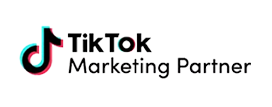More than two-thirds of online experiences begin with a search engine. So, if you’re reading this article, your journey likely began with a search engine too.
That begs the question: how did we get you here, on our website? Most likely, you searched Google or some other search engine and clicked on this article. For you, that journey was pretty straightforward. For us, putting ourselves in the position to get your attention wasn’t quite as simple. We needed to fine-tune our SEO strategy, from the content to the technical side, and everything in between.




Where’s the first place you turn when you need to answer a question about a subject you’re not familiar with? Likely Google. Whether it’s Google Search or Google Maps, SEO helps businesses become the first answer to those searches.
So, why let a competitor take first place on Google instead of you? In Toronto, the market for most businesses is competitive. At the same time, being the largest city in Canada means that there are a lot more opportunities than you would see in most places. That gives SEO agencies, including our New Digital marketing agency, more avenues to manoeuvre through and grab your audience’s attention. A successful SEO strategy requires creativity.

SEO content is the meat of the SEO strategy: it’s online material optimized and designed to rank prominently high in search engine results and effectively attract, engage, and serve the intended audience. This involves a strategic blend of satisfying algorithmic criteria such as keywords while also helping the user solve their problems. SEO content isn’t confined to textual elements, or copywriting, but spans across various formats, including images, text formatting, alternative descriptions and much more, each catering to specific user needs and search engine ranking factors.
In the realm of SEO, textual content plays a pivotal role in communicating the essence of your webpage to both users and search engines. From blog posts and articles to landing page copy, textual content should embody a coherent integration of keywords while maintaining a natural, informative, and compelling narrative. It’s imperative that the written content comprehensively addresses user queries, offering actionable and insightful solutions, all while subtly integrating relevant keywords.
Visual content encompasses images, videos, infographics, and other visual elements that enrich the user experience and facilitate the effortless comprehension of information. SEO for visual content involves optimizing file sizes to ensure swift page loading, incorporating descriptive alt text for images, and ensuring that video content is accompanied by textual descriptors. Effective visual content not only enhances user engagement but, when optimized correctly, can also become a substantial traffic source via image and video search results.
High-quality SEO-optimized content isn’t merely a vessel for keywords but serves as a pillar upholding your website’s credibility, user trust, and search engine ranking. The aim of SEO is to produce content that visitors will stick around on your website for. The longer they stick around on your website, the higher the chance you have of converting them into a customer, and the more Google will promote your website in their SERPs.
High-caliber SEO copywriting, directly and indirectly, influences search engine rankings, contributing to improved visibility and increased organic traffic.
Now that you understand the importance of SEO in creating a high-quality lead magnet for your business, let’s dig into the mechanisms through which websites attract new visitors.
Imagine you’re about to search for a pet store on Google. What might you type into the search engine? Most likely, your search goes something like “pet stores near me” or “pet store in Brampton”. Perhaps, you have a specific need in mind. If you need to feed your fish, you might search “fish food flakes in Brampton”. As you can see, there is a whole range of products related to pet stores that a potential customer might look for. Think of all the questions that people ask you when they come into your store or call you, these are similar to the types of questions your customers might ask on Google.
Fortunately, you don’t need to brainstorm all these keywords yourself.
By using platforms like Google Keyword Planner or SEMrush, you can delve into search query data, analyze competitor keywords, and pinpoint high-value phrases that your customers resonate with.
Now comes the next challenge, integrating keywords into content is an art of balance. Keyword density, while being a metric to ensure keywords are not overly used, must be delicately balanced to preserve natural readability and avoid what’s known as keyword stuffing. Strategic keyword placement, particularly within the title, headers, and introductory paragraphs, can augment SEO while maintaining a smooth reader experience.
Long-tail keywords, essentially phrases that encapsulate more specific queries like the fish food example we used earlier, become paramount in connecting with a targeted, often more conversion-ready audience. They allow businesses to cater to specific user intent, thereby capturing a more niche segment of the market.
For businesses in the Toronto area, utilizing localized keywords, such as “Toronto SEO services” or “content marketing agency in Toronto,” intertwines their content with a local context, fostering enhanced visibility among local searchers. This is of utmost importance to businesses that primarily target their local market.
Backlinks, or inbound links from external domains, essentially act as endorsements for your content, enhancing both domain authority and SEO. When another website links to yours, you get a backlink.
In the quest for backlink building, the quality versus quantity debate invariably surfaces. While a large number of backlinks can appear beneficial, search engines weigh the quality of these links with higher regard, thus, acquiring links from credible, high-authority domains becomes paramount. In the local context, you often want to get links from other local businesses and listing websites.
However, strategies to acquire high-quality backlinks can encompass a spectrum of activities. Guest posting, whereby contributing content to reputable sites within your industry can carve out opportunities for backlink generation, becomes invaluable. Forming partnerships, and engaging in collaborations with other businesses, influencers, or industry experts, opens avenues for mutual backlink building. Furthermore, crafting insightful, compelling, and share-worthy content inherently magnetizes backlinks, as readers naturally desire to share valuable resources.
Analyzing and maintaining a keen eye on your backlink profile is facilitated through tools like Ahrefs or Screaming Frog, safeguarding against potentially detrimental links and ensuring sustained backlink quality.
For local businesses, especially in a city as bustling as Toronto, local SEO reigns supreme. Local SEO ensures your business is visible to those in your immediate geographical vicinity, connecting you directly with your local target audience.
Claiming and optimizing your Google My Business (GMB) listing does not just enhance your visibility in local search results but also furnishes users with vital business information at a glance. Ensuring your GMB listing is accurate, complete, and optimized is a non-negotiable in effective local SEO. So many of your competitors forget to do it, so it’s also an easy way to beat them.
The role of NAP (Name, Address, Phone number) citations is also significant. Ensuring consistency in NAP information across various platforms and directories fortifies your local SEO. Ensuring that your business information is consistent, accurate, and readily available across all platforms and local directories will make your business appear more credible to search engines.
Local reviews and ratings are intrinsic in shaping your local digital reputation. They do not just offer social proof and foster trust among potential customers but also serve as valuable local SEO signals. Hence, forming strategies to garner positive reviews, whether through impeccable service, direct encouragement, or incentive programs, becomes foundational in cementing both your digital and local standing.

Let’s be clear, these different types of SEO are not mutually exclusive. However, if you have limited resources, then you might need to pick between them, here is an overview of what you should prioritize.
Despite the heavy emphasis on local SEO for Toronto businesses, the role of Organic SEO cannot be sidestepped. Especially if you have a national or international presence.
Organic SEO focuses on developing a robust online presence that naturally attracts traffic through high-quality content, optimized keywords, and solid backlink profiles. It amplifies your reach, connecting you not just with local audiences but with users who might be seeking your products or services from various corners of the globe.
This becomes particularly pertinent for businesses that, while rooted in Toronto, offer products or services that transcend geographical boundaries, such as e-commerce platforms, online services, or digital products. Hence, crafting a strategy that amalgamates localized content with broader, more universally relevant material becomes crucial.
So, what does an SEO content writing agency do for you? Here are some of the many roles.
An effective SEO strategy is invariably anchored in clearly defined business goals and Key Performance Indicators (KPIs). Establishing objectives, whether it pertains to increasing organic traffic, enhancing customer conversion, or bolstering online visibility, serves as the linchpin around which SEO strategies are curated. KPIs, on the other hand, allow businesses to measure the efficacy of their strategies, providing tangible metrics against which performance can be assessed, such as organic search traffic, bounce rate, or conversion rate.
Identifying and understanding your target audience is the cornerstone upon which effective SEO is built. It's not merely about reaching an expansive audience but about connecting with the right demographic – those who find genuine value in your offerings. This involves a comprehensive understanding of your audience's behaviors, preferences, and pain points, and subsequently crafting content and SEO strategies that resonate, engage, and convert this specific demographic.
An SEO audit acts as a diagnostic tool, meticulously assessing the current status of your online presence and identifying areas that require enhancement or optimization. This encompasses an analysis of your website’s technical performance, on-page and off-page SEO, and content quality. A gap analysis, conversely, involves identifying discrepancies between current performance and desired business goals, thereby illuminating areas that necessitate focused SEO intervention.
A holistic SEO plan encompasses a spectrum of strategies, each integral in enhancing various facets of your online presence.
SEO does not operate in isolation. It’s intricately woven into your overarching marketing strategy, interfacing with your social media, content marketing, and paid advertising endeavors. Ensuring that your SEO strategies are in synergy with your broader marketing objectives, whether that involves aligning keyword strategies with content marketing endeavors or leveraging SEO insights to inform paid advertising, is pivotal in crafting a unified, coherent, and effective digital marketing approach.
A meticulous content audit helps you refine your content strategy, involving a thorough examination of existing material to discern its efficacy and impact. This involves assessing current content against predefined KPIs, understanding user engagement, and examining its SEO performance. The audit will highlight gaps, underperforming content, and areas that necessitate enhancement or revision, ensuring that every content piece is not merely present but prolific in driving engagement and conversions. In the end, your SEO manager can designate which content needs to be augmented, and which content needs to be replaced entirely.
The embodiment of effective SEO content pivots on adept keyword research and integration. Identifying keywords isn’t simply about pinpointing high-volume terms but discerning those that resonate with your audience’s queries, needs, and language. SEO agencies will likely ask for your input in the initial phase so they understand which direction to take your content strategy in.
A content calendar emerges as a strategic tool for organizing and scheduling your content creation and distribution. It aligns with not just SEO objectives but also marketing campaigns, seasonal trends, and consumer behavior, ensuring that content is timely, relevant, and in synergy with your overarching marketing and business strategies. It aids in maintaining consistency in posting, which is vital for audience engagement and sustaining a reliable and trustworthy brand image.
Once crafted, you need to send the content through every channel possible to reach your audience. This involves leveraging social media, email marketing, and even paid advertising to amplify your content’s reach and impact. Furthermore, utilizing SEO and content promotion synergistically, such as sharing keyword-optimized blog posts on social media or through newsletters, ensures a unified, coherent approach to digital marketing.
The digital landscape is perpetually evolving, and content must adapt to remain relevant and effective. Regular updates and optimizations, guided by performance data, feedback, and SEO updates, ensure your content remains a potent tool in driving traffic, engagement, and conversions. In essence, content creation and management, especially in a locale as dynamic as Toronto, require a well-orchestrated blend of strategy, SEO, and genuine value provision to ensure it not only reaches the audience but also resonates, engages, and converts them. Website Optimization
The first impressions website visitors form are substantially influenced by the UX and UI of a website. A website should not only be visually appealing but also offer a seamless and intuitive navigation experience. Every element, from color schemes to button placements, needs to be crafted with the user in mind, ensuring that the journey from landing to conversion is as frictionless and engaging as possible.
Mobile devices are the source of around half of searches on Google. Your website's architecture, design, and functionality must adapt flawlessly across various screen sizes, ensuring consistent user experience and maintaining SEO integrity, especially considering search engines like Google prioritize mobile-optimized websites.
A snappy, swift-loading website is paramount in retaining user attention and favouring search engine rankings. Optimizing images, leveraging browser caching, minifying code, and utilizing a Content Delivery Network (CDN) are crucial strategies in ensuring your website loads with alacrity, thereby enhancing both user satisfaction and SEO performance.
A secure website, typified by HTTPS, isn’t merely a bulwark against potential cyber threats but also a subtle signal to users about your brand’s credibility and reliability. Concurrently, ensuring that your website is accessible to all users, including those with disabilities, is pivotal, which involves adhering to the Web Content Accessibility Guidelines (WCAG) and employing accessible design principles.
Incorporating schema markup and structured data not only enables search engines to understand your content better but also can enhance the way your pages are represented in search results. By providing explicit cues about the context of your content, schema markup can help in creating rich snippets and improving the visibility of your content in SERPs (Search Engine Results Pages).
Effective SEO reaches beyond the confines of one's website, venturing into the interconnected realm of the web. Link-building strategies form a pivotal pillar of SEO, amplifying visibility, authority, and digital presence, especially amidst the vibrant and competitive Toronto market.
Domain Authority (DA) isn't merely a metric but an emblem of your website's credibility and visibility in the digital sphere. Establishing and enhancing your DA involves a holistic approach, amalgamating high-quality content, seamless user experience, and, crucially, a robust network of high-quality links, both internal and external.
Internal links, adeptly woven into your content, facilitate user navigation, enriching user experience, and discreetly guiding them through their journey from discovery to conversion. Moreover, judicious internal linking helps search engines discern the structure and hierarchy of your website, allocating authority judiciously across pages and bolstering SEO.
Leveraging your content across social media platforms not only expands your reach and engages your audience but also fosters link-building. Sharing content, engaging in conversations, and participating in community threads enhances visibility and occasionally facilitates natural link acquisition.
Despite best efforts, toxic or low-quality links can encroach upon your link profile. Periodic audits, meticulous management, and, when necessary, disavowing such links through search engine tools, ensure that your link profile remains robust and your SEO unhampered.
At its core, link building should be symbiotically tied with content quality. High-quality, valuable, and relevant content naturally attracts links, affirming that genuine value provision forms the backbone of effective link-building strategies.
The dynamism of the digital world, especially in a locale as vibrant as Toronto, necessitates meticulous, ongoing monitoring, analysis, and adaptation of SEO and link-building strategies, ensuring they remain potent and relevant.
Implementing robust analytics and tracking tools, such as Google Analytics, facilitates comprehensive data accumulation regarding website performance, user behavior, and SEO efficacy.
Continuous monitoring of website performance, user engagement, and SEO metrics is pivotal in ensuring that strategies employed are yielding the desired outcomes and in identifying areas necessitating enhancement or recalibration.
Delving into the intricacies of traffic sources and user behavior unveils insights into your audience's journey, preferences, and pain points, guiding optimizations and strategy adaptations.
Understanding not just traffic but conversion pathways, identifying what content or strategies drive conversions, and discerning patterns is integral in fine-tuning your approach to enhance ROI.
Regular reporting, whether monthly or quarterly, encapsulates performance metrics, achievements, and areas of improvement, ensuring strategies are transparent, accountable, and adaptable.
Data should not merely be accumulated but actively inform strategy adaptations and optimizations. By rooting strategies in data-derived insights, your SEO and link-building approaches remain agile, relevant, and effectively aligned with both market trends and user needs.
While big agencies might have more infratstructure, they are typically a bit slow to adapt. Local agencies bring to the table an intimate knowledge of the regional market dynamics, consumer behavior, and competitive landscape, ensuring that SEO and content strategies are precisely tailored to resonate with the local audience and adhere to region-specific trends and norms.
Scrutinize the agency’s tenure and track record in the SEO domain, exploring their expertise across various facets of SEO - from technical optimizations to content strategies. An agency that brings a wealth of experience is likely to navigate the volatile SEO landscape with adept proficiency.
Explore the agency’s past and current clientele and delve into their portfolio. This will provide insights into their capabilities, the niches they are familiar with, and the kind of results they have garnered for similar businesses.
An effective SEO content strategy isn’t a one-size-fits-all model. Seek an agency that prioritizes the customization of strategies to align seamlessly with your business goals, target audience, and brand persona.
Evaluate the agency’s pricing models and packages, ensuring they offer a balanced blend of affordability and value. An agency that offers transparent, scalable pricing, and packages is likely to accommodate the evolving needs of your business.
Double-check the agency’s claims by exploring reviews and testimonials from previous clients. This will offer a window into their reliability, efficacy, and client service, providing a more rounded view of what to expect.
Engaging with an SEO content writing agency, aka copywriting agency, particularly amidst the competitive Toronto market, also necessitates caution to sidestep common pitfalls.
When we work with clients, the most pressing concern tends to be how they can do more with less, i.e., get higher returns on their digital marketing strategy.
For us, high-return content marketing looks like this:
If you’re ready to start upgrading your digital marketing strategy with a team that has the tools to execute, look no further than New Digital. Get in touch with us for more details.
Run a free local SEO audit report, which will sent directly to your inbox in just a few minutes and .
The report may help boost your business’s rankings on Google and Bing Maps, as well as overall search engine results pages (SERP).
In 2024, typical online advertising strategies are stagnating. With the average user seeing up to 10,000 ads per day, it’s getting harder and harder to stand out from the noise.
SEO content services serve 2 main purposes. The first is to build a relationship with your audience. On the other hand, SEO also facilitates another important component of marketing: visibility.
Here’s an overview of what makes SEO writing services so powerful.
Ready to Accelerate Your Growth? Book a Strategy Call!